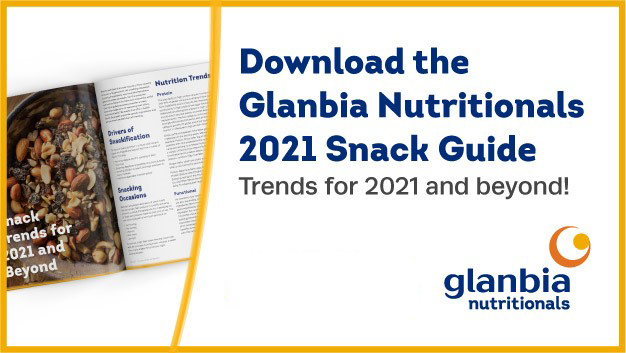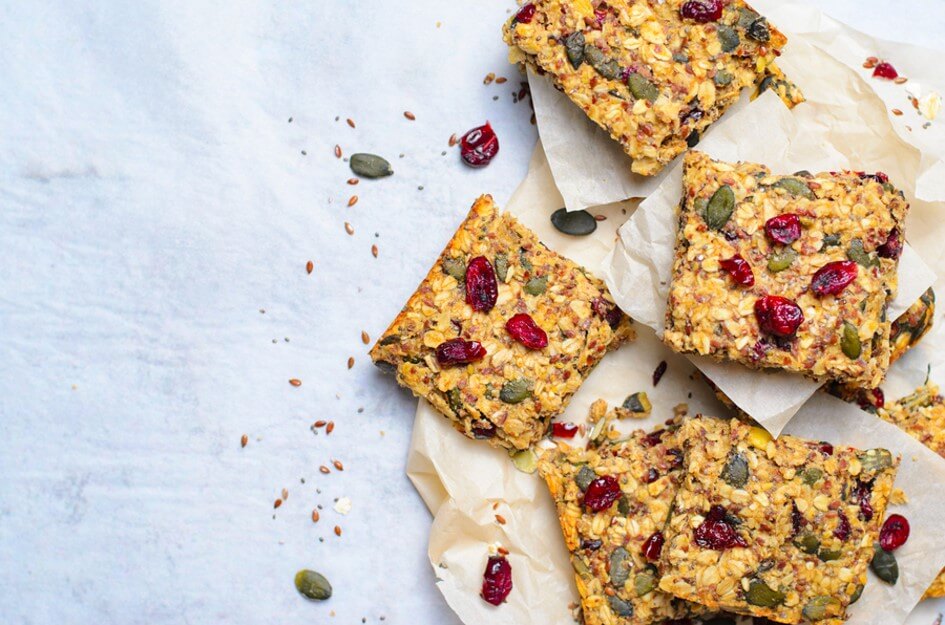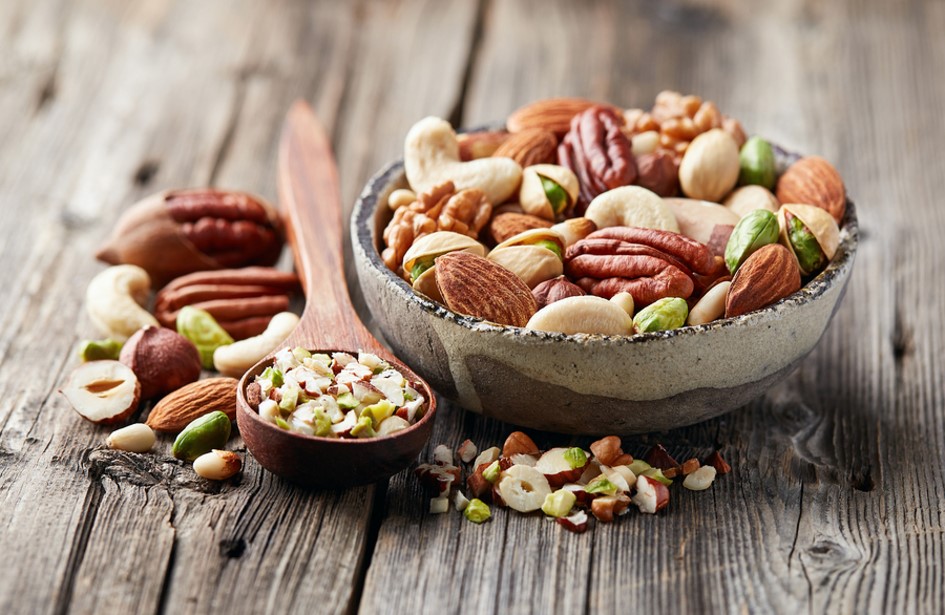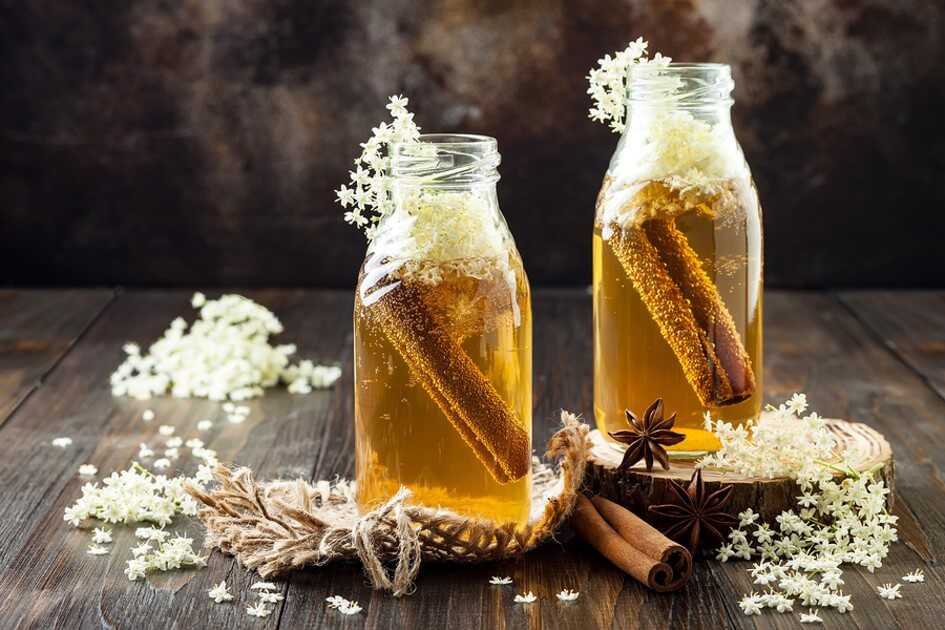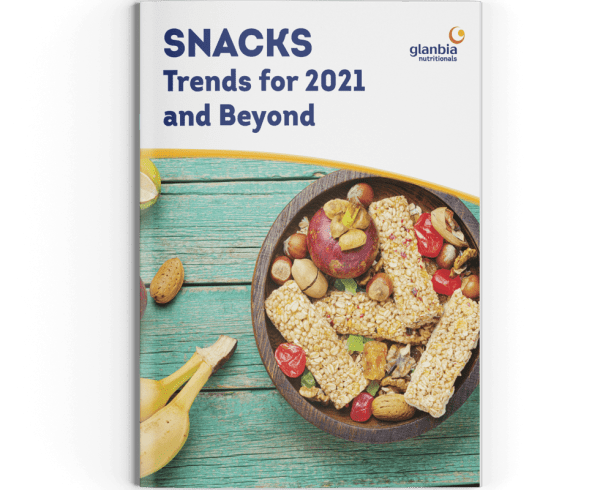Healthy Snacks Driving Snack Market Growth
The global healthy snacks market is forecast to reach $98 billion by 2025, growing at a CAGR of 5.8% between 2020 and 2025, according to Euromonitor.2 Nuts, seeds and trail mixes continue to lead the market, with a revenue share of 41%, followed by snack bars with 20% share.3
While North America is currently the largest market for healthy snacks, consumers in emerging economies in Latin America, Asia Pacific and the Middle East & Africa, are experiencing a shift in consumption patterns and increasing disposable incomes that could lead to high future growth in healthy snacks.
Clean label, sustainability and functional ingredient claims are driving snack food sales. According to Mintel Global Product Launch database, in the previous five years, snacks with a vegan/no animal ingredients claims grew by 11.8% annually, environmentally friendly packaging grew 7% annually, snacks with high or added protein grew 11.5% annually, and those with no or reduced sugar grew by 13.4% annually.4
So What Makes a Snack Healthy?
As consumers scan the shelves for snacks that they can feel good about, they look for cues such as claims and ingredients to help guide their purchasing decisions.
Top Claims
Popular front-of-package claims on snack foods that consumers associate with better-for-you include:
- Protein
- Whole grain
- Fiber
- Natural
- No artificial colors
- No artificial flavors
- Non-GMO
- Organic
- Gluten-free
- No added sugar
- Reduced sugar
- 100 calories
- Probiotics
- Antioxidants
- Vitamins and minerals
Top Ingredients
Consumers also understand certain ingredients to have inherent health and nutrition benefits, and often expect them in their healthy snacks. Today’s healthy snacks are typically based on or include ingredients such as:
- Whole grains and ancient grains
- Nuts
- Seeds
- Lean meats
- Fruits
- Vegetables
- Legumes
- Low fat and no fat dairy
Functional Food and Beverage Snacks
In addition to formulating snacks with macronutrients in mind—such as keeping protein and fiber high, while ensuring fat and sugar are low—adding functional ingredients is now a popular way for manufacturers to create a healthy snack. For example, bars may contain added vitamins and fiber, plant-based yogurts may be fortified with calcium, and beverages may include botanicals such as turmeric.
Other functional ingredients that can work well in snacks are amino acids, omega-3 fatty acids, and probiotics. Functional ingredients can be easily added to a food or beverage through a custom nutrient premix. Moreover, combining multiple functional ingredients into one custom nutrient premix streamlines several business operations including purchasing, warehousing, quality control, and production.
A custom nutrient premix can also be developed to meet the health and nutrition needs of specific consumer segments. It could address stage-of-life needs and be customized for growing kids, teens, or seniors. Or it could address health concerns, such as digestion, immunity, cognition, energy, or weight loss. For example, a custom nutrient premix containing calcium, vitamin D, and boron could be used in a product that supports bone health and targets senior women.

